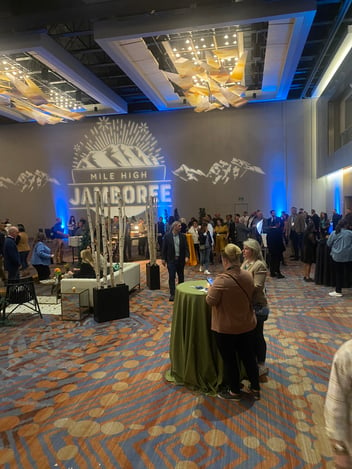The rise of technology in senior care facilities is largely a welcomed guest, allowing seniors to stay connected with loved ones through various communication tools such as smartphones, tablets, and computers, providing convenience and independence for seniors choosing to age in place and enhancing the overall level of healthcare. As we head into the final leg of 2023, we want to take a moment to recognize the different technologies that currently serve the senior living market and, more importantly, how these technological advancements are improving both the quality of life for older adults, as well as revolutionizing senior living facilities as a whole.
Smart Home Solutions
To begin, technology has revolutionized aging in place for seniors, as it offers a range of features that promote safety, comfort, and convenience. Popular smart home solutions such as Amazon's Alexa and Google Assistant act as voice-activated assistants, allowing seniors to easily control various aspects of their home, such as adjusting the temperature, turning on lights, or playing music, simply by using voice commands. When combined with the integration of sensors and automation systems, which can detect falls, monitor activity levels, and even remind seniors to take their medications, smart home technology not only returns autonomy to seniors but also enables family members or caregivers to keep an eye on their loved ones from afar.
These systems can provide peace of mind by alerting caregivers to any unusual activity or emergencies, allowing for quick intervention.
Robotics and Automation
Robotics and automation have the potential to revolutionize senior care in various ways. One area where robotics is making an impact is in assisting with daily tasks. Robots can help with activities such as appointment or medication reminders, meal preparation, and housekeeping, reducing the burden on caregivers and promoting independence for seniors. Additionally, robotic companions are being developed to provide social interaction and emotional support for older adults, with robots that can engage in conversations and play games.
Senior care facilities are also implementing automation systems to streamline operations and improve efficiency. For example, automated medication dispensers can ensure the correct dosage and timing of medications, reducing the risk of errors. Automated monitoring systems can track vital signs and alert healthcare providers to any deviations from normal values.
EHR Systems and Dashboards
Technology has greatly improved the efficiency of facility operations in senior living facilities. One key technology is the advanced use of electronic health records (EHR) systems. These systems streamline the documentation and management of residents' health information, reducing paperwork and improving accuracy. EHRs also facilitate communication among healthcare providers, ensuring continuity of care and minimizing errors.
Online Dashboards
Another technology that enhances facility operations is the use of automated scheduling and tracking systems. These systems optimize staff allocation, ensuring that the right caregivers are available at the right time. They also track tasks and workflows, improving accountability and reducing the risk of missed or delayed care. Dashboards, like our primeVIEW dashboard, are powerful tools that enable senior living facilities to efficiently manage and monitor the care of their residents by streamlining communication and coordination among healthcare providers so residents receive timely and appropriate care.
In summary, technology has revolutionized facility operations in senior living facilities, improving efficiency, communication, and maintenance processes.
/Prime-Care-Technologies-Logo.png?width=191&height=55&name=Prime-Care-Technologies-Logo.png)


